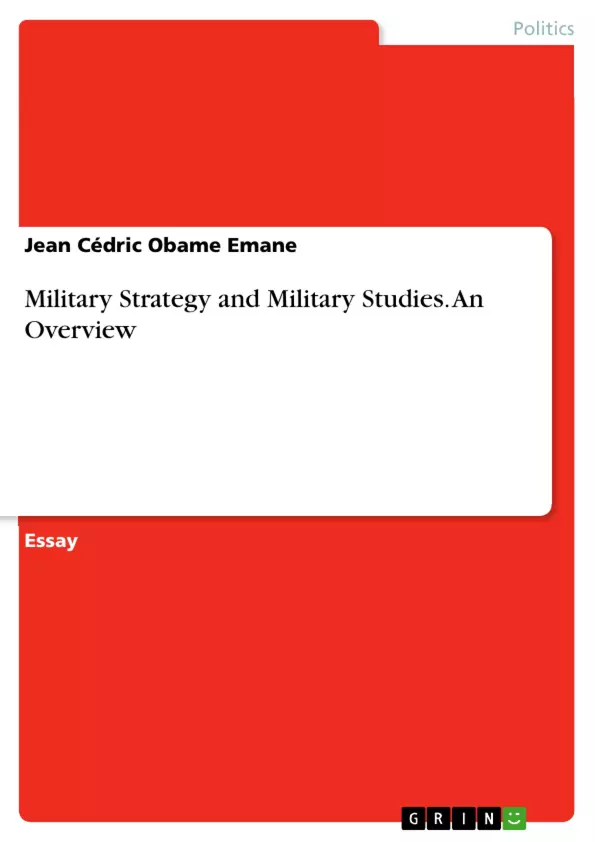Military strategy is a discipline that we have chosen to develop lastly in our coursework; the discipline has drawn our attention in our major because we want to understand the importance of designing a strategy on the part of the military before going to war. It is amazing because we will see that from the very beginning of the world, nations or people had always wanted to ensure their dominion or hegemony, as it was the case with the Roman Empire, Napoléon, the Babylonian and the Acadian people. We will grasp the significance of strategy, and as well we shall see that military strategy is an art.
Table of Contents
- A Brief Overview of Military Strategy
- The Elements of National Power
- Natural determinants of power
- Social Determinants of Power
- The Five Basic Military Strategies
- The Strategy of Extermination
- The Strategy of Exhaustion
- The Strategy of Annihilation
- The Strategy of Intimidation
- The Strategy of Decapitation
Objectives and Key Themes
This essay aims to provide a comprehensive understanding of military strategy, exploring its definition, components, and application in the context of national power. It seeks to elucidate the essential elements of strategy, analyzing how they are employed in the design and execution of military operations.
- Defining military strategy and its significance
- The role of national power in military strategy
- Key elements of military strategy: objectives, ways, and means
- Analysis of different military strategies
- The influence of resources on strategy development
Chapter Summaries
- A Brief Overview of Military Strategy: This chapter delves into the definition of military strategy, examining its historical origins and contemporary understanding. It highlights the importance of military strategy as a vital element of national policy.
- The Elements of National Power: This section explores the various factors that contribute to a nation's power, including natural resources, population, and social structures. It emphasizes the critical role that these elements play in shaping military strategy.
- The Five Basic Military Strategies: This chapter discusses five fundamental military strategies: extermination, exhaustion, annihilation, intimidation, and decapitation. It examines the characteristics and applications of each strategy in the context of warfare.
Keywords
Military strategy, national power, objectives, ways, means, military resources, deterrence, national policy, extermination, exhaustion, annihilation, intimidation, decapitation, strategy-capabilities fit.
- Quote paper
- Jean Cédric Obame Emane (Author), 2017, Military Strategy and Military Studies. An Overview, Munich, GRIN Verlag, https://www.grin.com/document/416292



